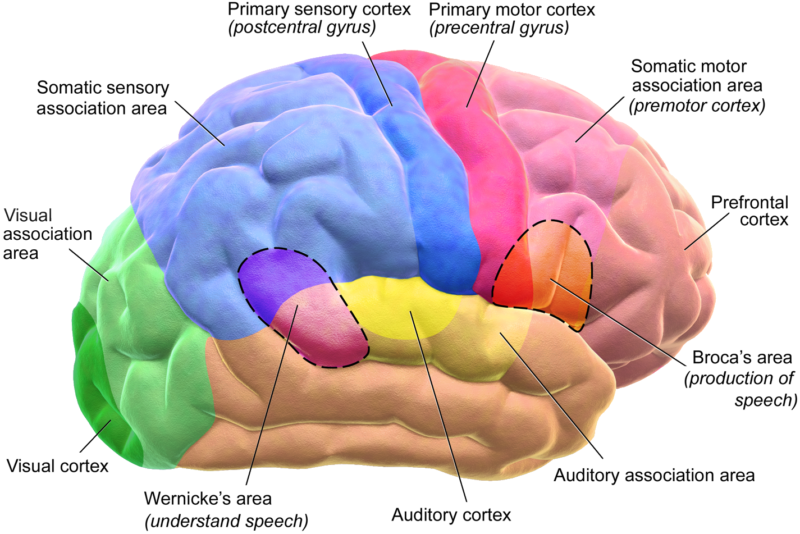This is the first of a two-part series on the neurobiology of self-defense. This post will focus on fight/flight/freeze responses, and how traumatic stress impacts those. Next time, I’ll talk about the neurobiology of social dynamics.
Fight or Flight
Most people have heard of the “fight or flight” response. What it describes is how our brains respond to danger in the environment. As it turns out, it’s a little simplistic, but it’s true most of the time, and for most people. Basically, here’s how it works: there’s a part of the brain (I’ll call it the ancient brain) that is constantly scanning the environment. When it senses danger, it triggers the sympathetic nervous system, which readies our body for either fighting back or running away. This is the source of the kind of intuition that we talk about in self-defense. It’s a physiological response to perceived danger, and we share it with all mammals. Examples of this response are increased heart rate, sweating, goosebumps, and pupil dilation in the eyes. Your heart rate increases so that you can get more blood to your muscles. The sweating is to cool you down pro-actively, because you’re about to be working hard.
The goosebumps are your body’s attempt to make you look bigger by making your fur stick out (if you have a cat, you’ve seen this with an actually-furred creature, which we no longer are).
Now, that part of the brain that scans the environment – it’s very good at what it does. This is evidenced by the fact that, as a species, we still exist. But it’s not magic. It works very quickly — much more quickly than conscious, verbal thought – but it’s still based on our experiences to date. And it’s almost certainly biased, even if our normal, rational minds aren’t. That isn’t a value judgement on us; our brains are working as designed. But it is an unfortunate reality. That’s why we talk about both listening to intuition, and trying – later, once you’re safe – to figure out what caused you to feel unsafe. Was it someone’s behavior, or was it their identity? You don’t always know, but to the extent that you can figure it out, it’s a valuable exercise. Attending to someone’s behavior is always going to tell you more than making assumptions based on their perceived identity.
What If I Freeze?
We get this question a lot in our self-defense classes. People are worried that they’ll freeze up when confronted with serious danger. There are a couple of reasons why this happens. The first is less a freeze reflex than a startle reflex. You’ll see it in bunny rabbits sometimes – they hear something, and they instantly freeze. We do that too, but neither us or the bunnies get stuck in that posture. The purpose of it is to get as much information from the environment as we can in as short an amount of time, and to not get eaten during that short time. But when Bunny freezes, if it figures out that there’s a falcon bearing down on it, it doesn’t maintain that frozen state – it gets the heck outta dodge. The startle reflex only lasts a few seconds or less – it just feels longer, because in those moments we’re taking in a lot of information, and that plays with our sense of time.
Now, there are times when a person being attacked might indeed freeze and be unable to react during an assault. As I tell my students, it doesn’t happen very often in adults. When it does happen to adults, it almost always can be traced back to significant early trauma in their lives. This true freeze response – often accompanied by a feeling that something isn’t real or that you’re not really there – is what I sometimes call an ‘ultra-emergency’ response. Your brain – again, not your thinking brain, your ancient, keep-you-alive brain, which is much, much older than your thinking brain – makes a determination that there’s nothing you can do to escape danger, and you just have to hunker down and survive it. The reason it doesn’t happen very often to adults is that adults generally can do something to escape danger. But babies and young children can’t. This gets me to how traumatic stress works on the brain.
Traumatic stress and the brain
Traumatic stress trains the brain to over-respond to danger, because the traumatized brain has learned that danger is everywhere. I kind of love this aspect of the way the brain works, even as I’m saddened that it can cause so much pain. What I love about it is its elegance. Unfortunately, some people are born into lives of great danger. And in those situations, these reactions, which we term a ‘disorder,’ are absolutely adaptive. They only become problematic once we regain safety, because it takes a while for the brain to realize that safety has been achieved. The ancient brain doesn’t have access to language or rational thought, so even though we rationally know we’re safe, we’ll keep reacting as if we aren’t, until we have enough experiences that the ancient brain relaxes. It makes sense, doesn’t it, that the ancient brain would err on the side of caution?
The other aspect of the way the traumatized ancient brain works is it remembers what emergency responses have worked before, and it will tend to rely on those responses. This is how the freeze response happens in adults. It was a successful response when someone was a young child, and it was needed enough that it became the brain’s favorite response. This also explains the anger problems some veterans have: anger is the emotion tied to the “fight” response, and it’s been over-trained.
Because the ancient brain learns through experience, taking a self-defense class, and experiencing yourself as powerful, can be an important step to teaching the ancient brain that it has multiple responses to emergency situations. Of course, it can also be triggering – when someone is triggered, they’re re-experiencing their trauma. Again, this is adaptive – the ancient brain is practicing its responses. It’s incredibly unpleasant, but it has kept us alive as a species, so I think it deserves some respect. The point, though, is that whether a self-defense class is right for someone is going to be very much an individual assessment. We do our best to be trauma-informed in all of our workshops, and make sure that our students know they’re in charge of their experience, but only the individual (perhaps in consultation with a qualified therapist) can determine what’s right for them.
Content provided by Women Belong member Amy Jones


 The 3-Part LinkedIn Blueprint to Crush It
The 3-Part LinkedIn Blueprint to Crush It Women Belong Book Club: Revenge of the Tipping Point
Women Belong Book Club: Revenge of the Tipping Point Women Belong Progressive Networking Lunch - Chicago
Women Belong Progressive Networking Lunch - Chicago Connections - Online Networking Event
Connections - Online Networking Event The Freedom Formula: The Power of Productization
The Freedom Formula: The Power of Productization